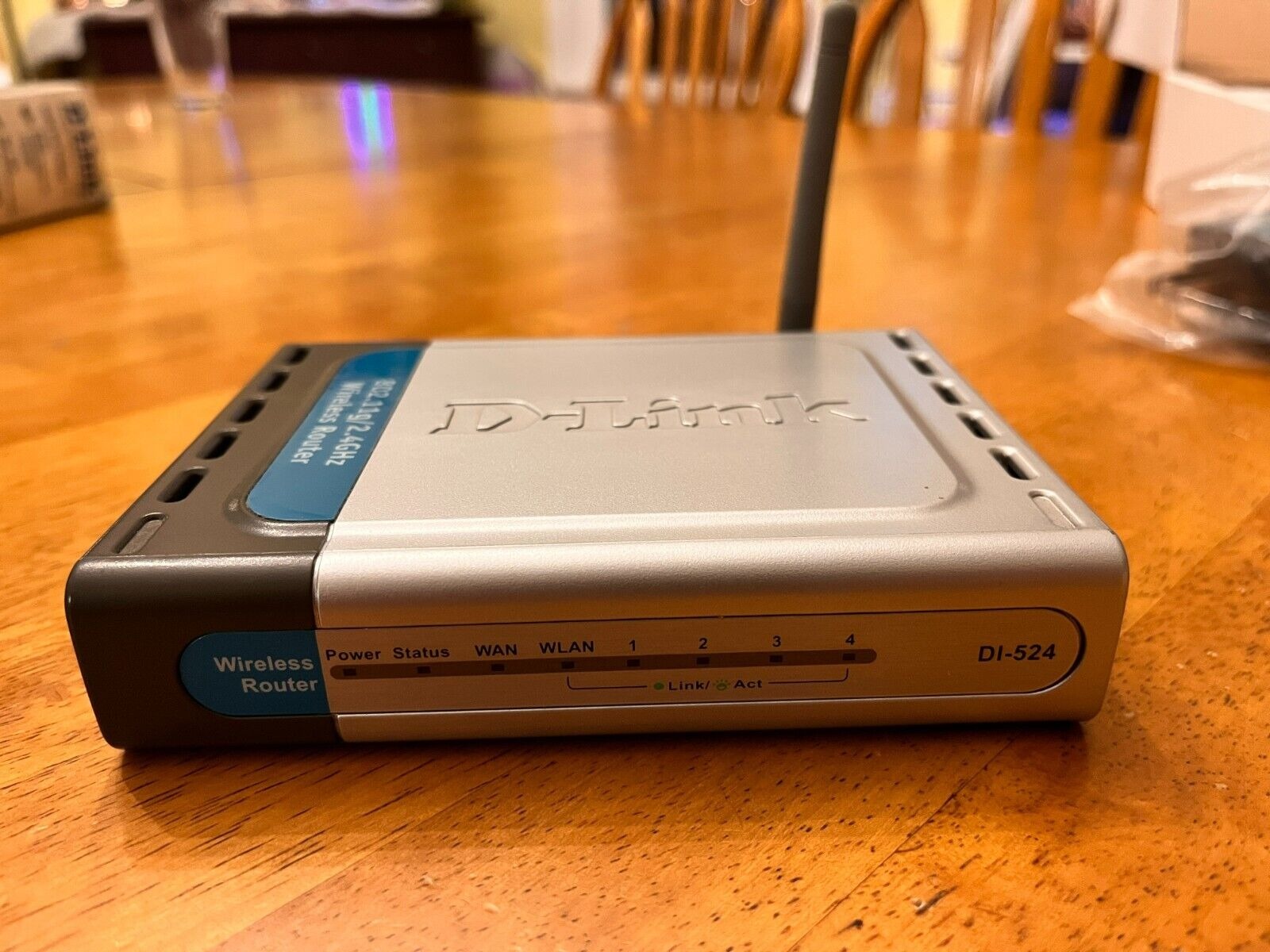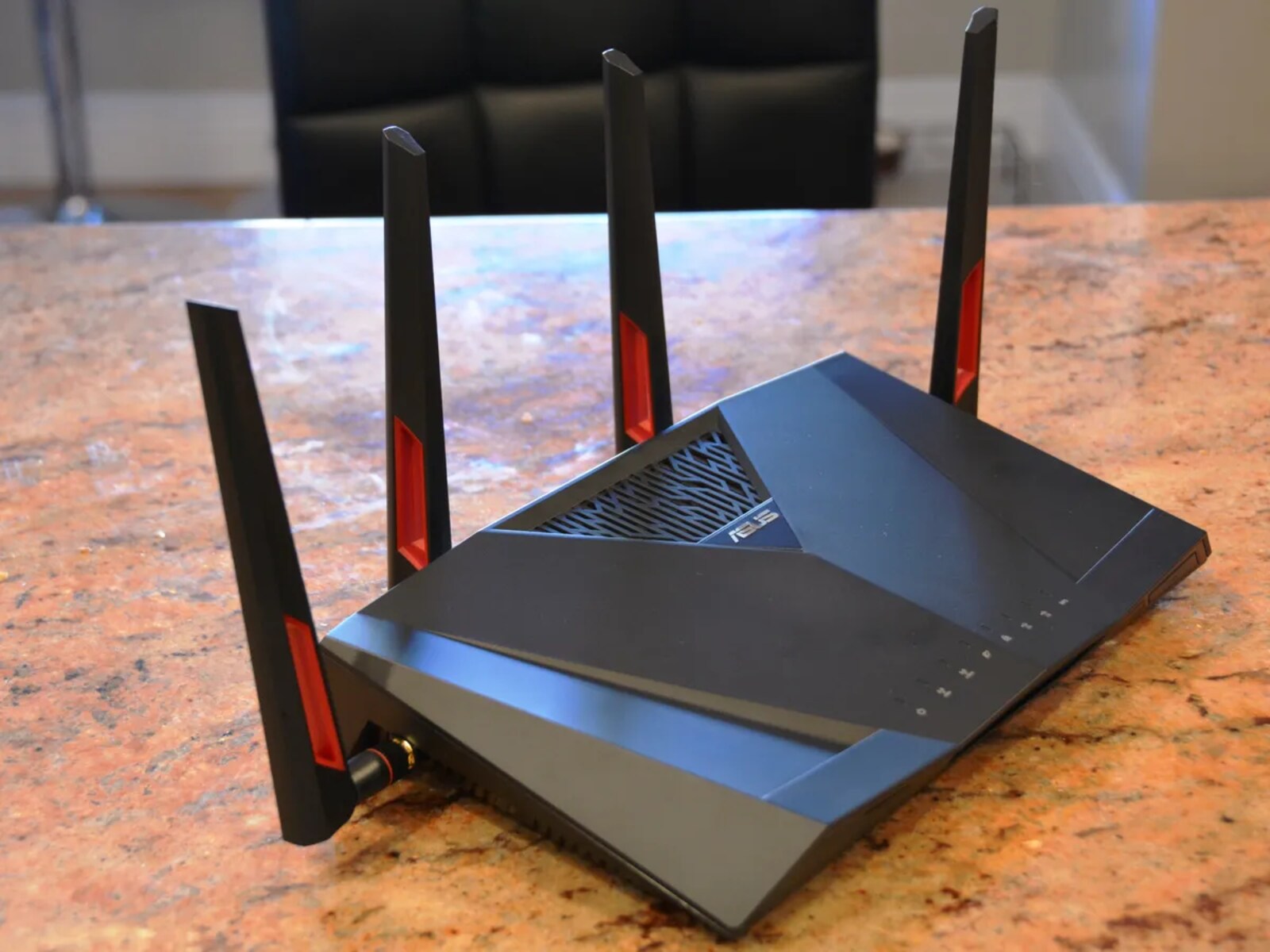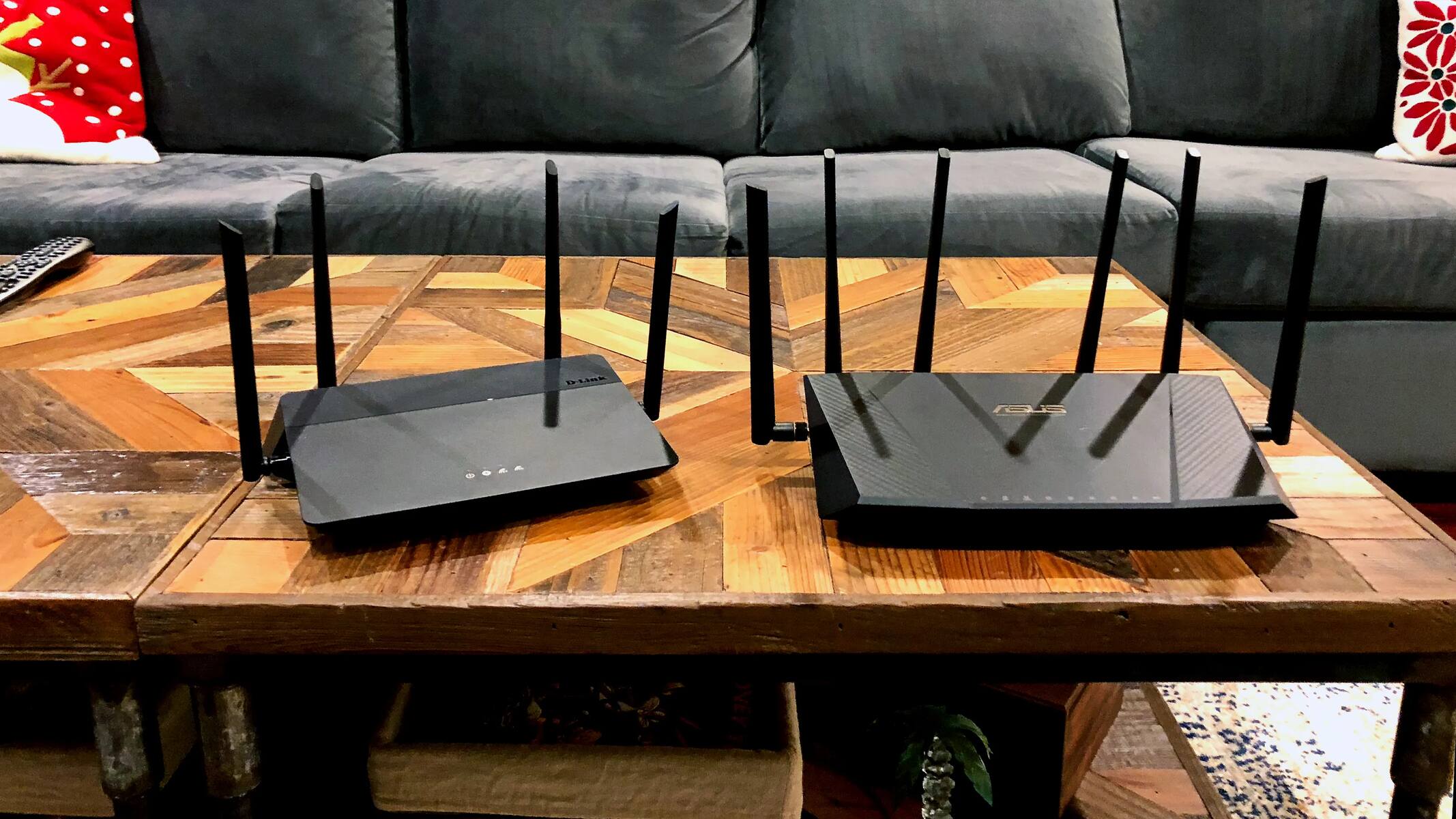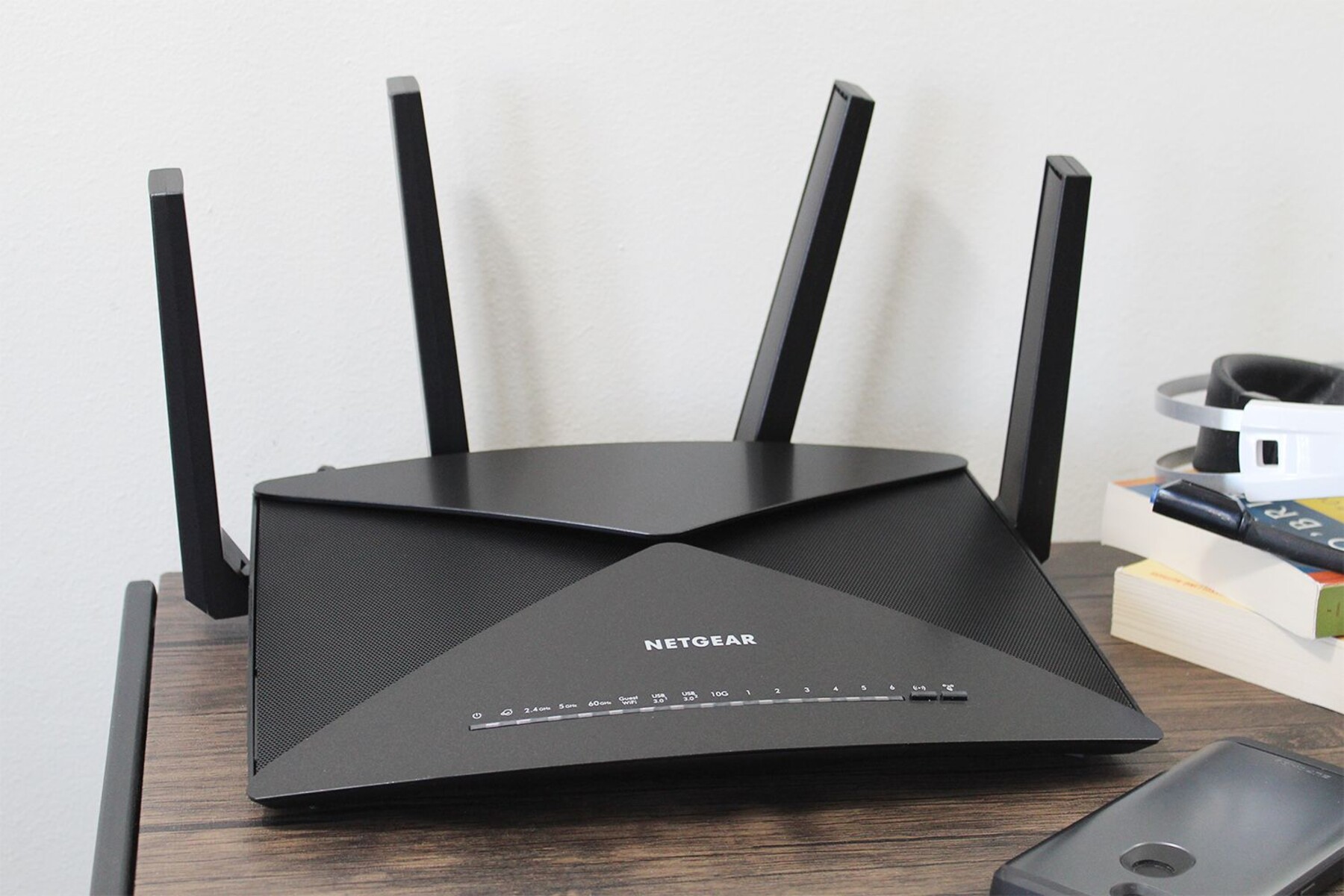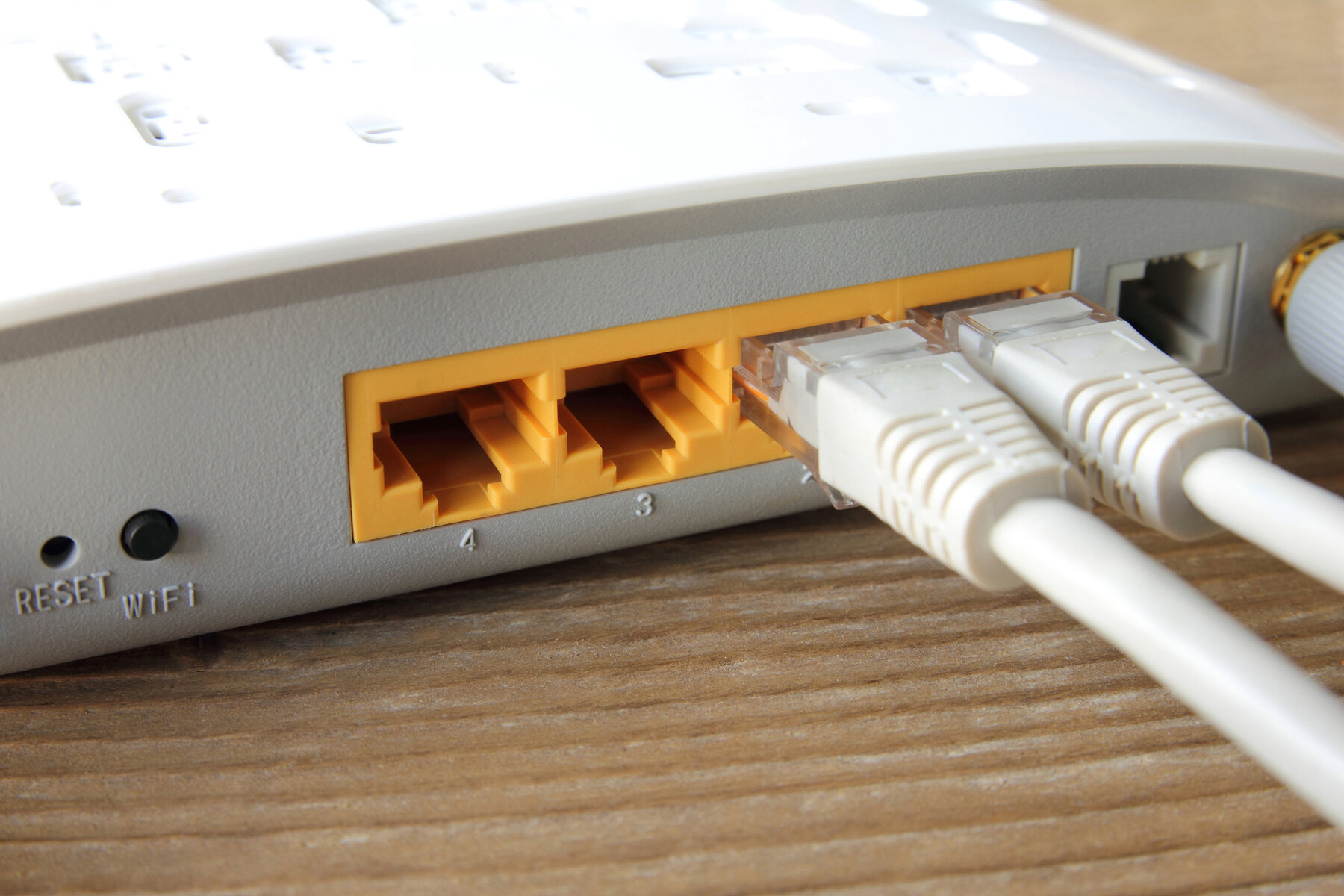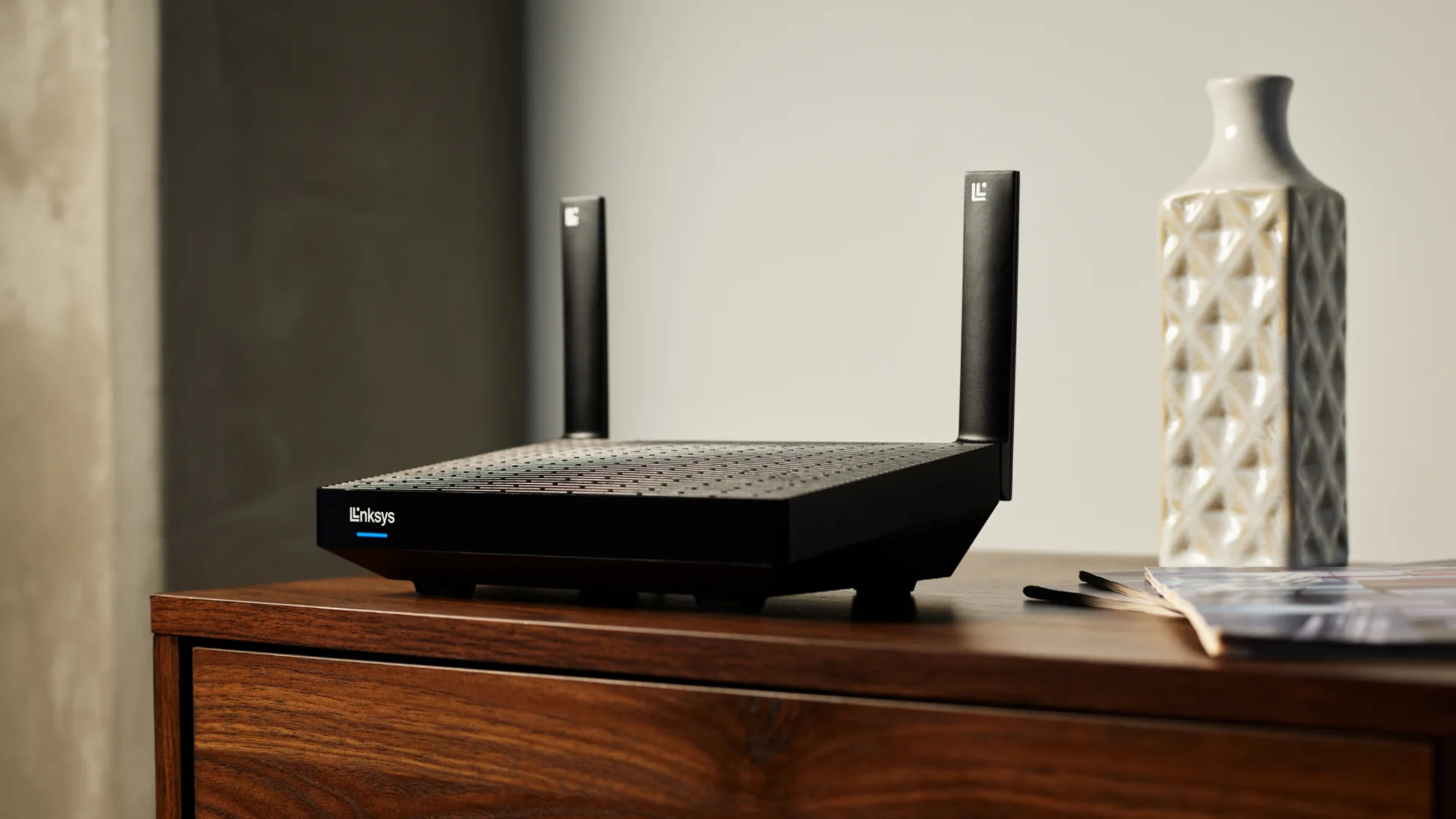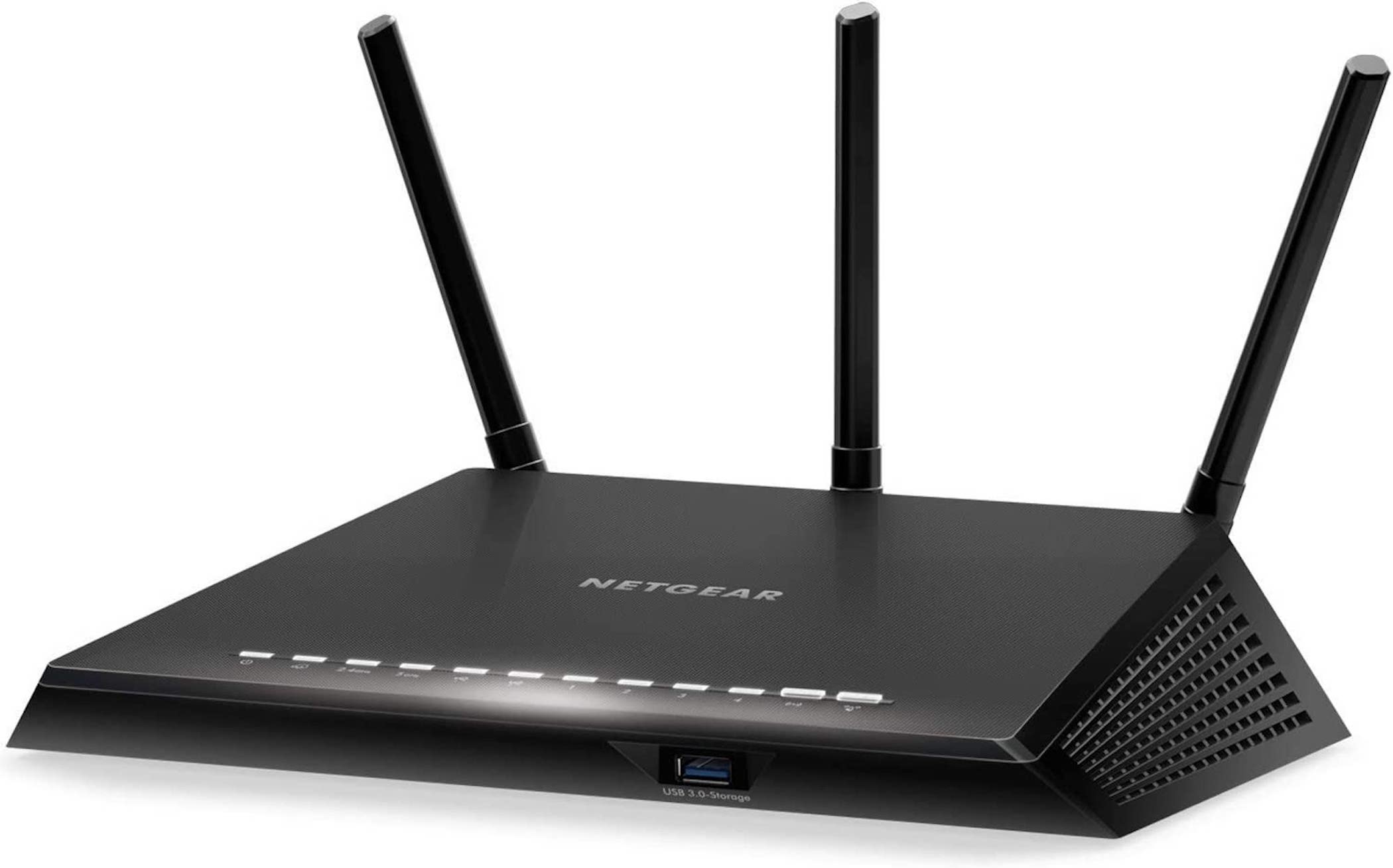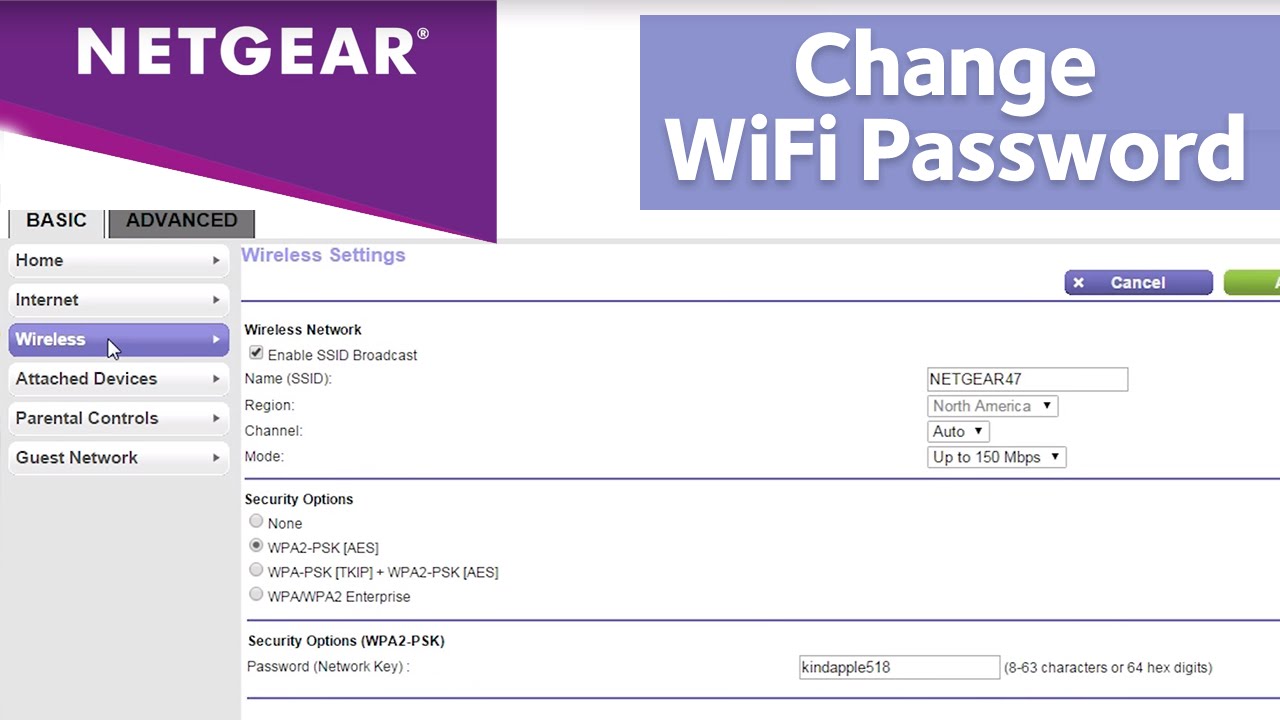Introduction
Welcome to this guide on how to change the password on your wireless router! In our increasingly connected world, securing your home network has become more important than ever. One of the first steps in ensuring the safety of your network is to change the default password on your wireless router.
Wireless routers are the devices that allow us to access the internet without the need for physical connections. They provide us with the freedom and convenience to connect our smartphones, laptops, and other wireless devices to the internet from any corner of our homes.
However, if you don’t change the default password that comes pre-configured on your router, you leave your network vulnerable to unauthorized access. Hackers and intruders can gain access to your network, compromising your personal information and potentially causing harm.
If you’re wondering how to change the password on your wireless router, you’ve come to the right place. By following a few simple steps, you can update your router’s password and enhance the security of your home network. So let’s dive in and learn how to change the password on your wireless router.
Why Change the Password on Your Wireless Router?
Changing the password on your wireless router is crucial for several reasons. Here are the main reasons why you should consider updating your router’s password:
- Enhanced security: The default password that comes with your wireless router is often well-known and easily accessible. Hackers can exploit this vulnerability and gain unauthorized access to your network. Changing the password to a unique and strong one will significantly reduce the risk of unauthorized intrusions.
- Protecting your personal information: Your wireless network holds a wealth of personal information, including banking details, login credentials, and sensitive data. By changing the password, you are adding an extra layer of protection to safeguard your personal information from potential cyber attacks.
- Preventing bandwidth theft: Leaving your router’s default password intact can leave your network susceptible to bandwidth theft. Neighbors or nearby individuals could connect to your network and consume your internet data without your knowledge. Changing the password ensures that only authorized users can connect to your network.
- Securing connected devices: When you change the password on your wireless router, it prompts all connected devices to enter the new password to regain network access. This ensures that only authorized devices can connect to your network, preventing unwanted devices from accessing your network without permission.
- Keeping up with router firmware updates: Changing your router’s password regularly provides an opportunity to check for and install firmware updates. These updates often address security vulnerabilities and bugs, ensuring that your router operates at its best and provides a secure environment for your network.
Now that we understand the importance of changing the password on your wireless router, let’s proceed to the next section, where we will guide you on how to check your current router password.
Checking Your Current Router Password
Before you can change the password on your wireless router, it’s essential to know your current password. Here’s how you can find it:
- Check the router label: Most routers have a label on the bottom or back that displays the default login credentials, including the username and password. Look for a section labeled “Network Key,” “Password,” or “WPA Key.” This is the password you need to access your router’s settings.
- Try the default credentials: If you can’t find the router label or the password on it doesn’t work, you can check the documentation that came with your router. Look for a manual or setup guide that provides the default login credentials. Keep in mind that manufacturers often use generic usernames and passwords, such as “admin” or “password.”
- Check your internet service provider (ISP) documentation: In some cases, your ISP may have set up your router and provided you with login information. Refer to any documents or emails you received from your ISP when your internet service was installed.
- Try common default passwords: If none of the above methods work, you can try some common default passwords that are commonly used by different router manufacturers. For example, “admin” is a common default password for many routers. However, it’s important to note that using common default passwords can leave your network vulnerable.
Once you have identified and accessed your router’s current password, you’re ready to move on to the next section, which will guide you on how to access your router’s settings.
Accessing Your Router’s Settings
In order to change the password on your wireless router, you need to access the router’s settings. The process may vary slightly depending on the make and model of your router, but here are the general steps:
- Connect to your router: Ensure that your computer or device is connected to your wireless router. You can do this by connecting to your Wi-Fi network or using an Ethernet cable to directly connect your computer to the router.
- Open a web browser: Launch a web browser such as Google Chrome, Mozilla Firefox, or Safari. You can use any web browser you prefer, as long as it supports HTML.
- Enter the router’s IP address: In the address bar of the web browser, type in the IP address of your router. The default IP address is usually printed on the router’s label or mentioned in the user manual. Common default IP addresses are “192.168.0.1” and “192.168.1.1”. Press Enter to proceed.
- Enter the login credentials: You will be prompted to enter the router’s username and password. This information can typically be found on the router’s label or in the user manual. If you’ve previously changed the default login credentials, use the new ones to log in.
- Access the router’s settings: After successfully logging in, you should now have access to your router’s settings interface. This interface may vary depending on your router, but it typically includes various tabs and menus that allow you to configure different aspects of your network.
Once you have successfully accessed your router’s settings, you’re ready to move on to the next section, where we will guide you on how to find the password change option.
Finding the Password Change Option
Now that you have access to your router’s settings, the next step is to locate the password change option. The specific steps may vary depending on your router’s make and model, but here’s a general guide on how to find the password change option:
- Look for the “Wireless” or “Wireless Settings” tab: In most routers, the password change option can be found under the “Wireless” or “Wireless Settings” tab. This tab is typically located in the main settings menu of your router’s interface.
- Navigate to the security settings: Within the “Wireless” or “Wireless Settings” tab, you will typically find a section dedicated to security settings. Look for options such as “Security,” “Encryption,” or “Security Mode.”
- Select the appropriate security mode: Within the security settings, you may need to choose the appropriate security mode for your network. The most common security modes are “WPA2,” “WPA/WPA2,” or “WPA-PSK/WPA2-PSK.”
- Locate the password change field: Once you’ve selected the security mode, look for the field where you can change the password. This field is usually labeled “Password,” “Passphrase,” or “Network Key.”
- Enter your new password: In the password change field, enter your desired new password. It’s essential to create a strong password that is unique and not easily guessable. Follow the best practices for password creation, such as using a combination of letters, numbers, and special characters.
- Save the changes: After entering your new password, save the changes by clicking on the “Save” or “Apply” button. Your router will typically prompt you to confirm the changes before they take effect.
Once you have successfully changed the password on your wireless router, you’ve taken a significant step in securing your network. In the next section, we will cover some tips for creating a strong password.
Changing Your Wireless Router Password
Changing the password on your wireless router is a simple yet effective way to enhance the security of your network. Here’s a step-by-step guide on how to change the password on your wireless router:
- Access your router’s settings: Follow the steps outlined in the previous section to access your router’s settings via a web browser.
- Locate the password change option: Once inside the router’s settings, navigate to the “Wireless” or “Wireless Settings” tab. Look for the section related to security settings or encryption.
- Select the appropriate security mode: Choose the recommended security mode for your network, such as “WPA2” or “WPA/WPA2.”
- Find the password change field: Within the security settings, locate the field that allows you to change the password. This field may be labeled as “Password,” “Passphrase,” or “Network Key.”
- Enter your new password: In the password change field, input your desired new password. Make sure to choose a strong and unique password by combining letters, numbers, and special characters. Aim for a password length of at least 8-12 characters.
- Save the changes: Once you’ve entered your new password, save the changes by clicking on the “Save” or “Apply” button within the router’s settings. Your router may prompt you to confirm the changes before they take effect.
After saving the changes, your wireless router will be protected by a new password. Remember to update any connected devices with the new password to maintain seamless connectivity. In the next section, we will provide some tips for creating a strong password to further enhance your network security.
Tips for Creating a Strong Password
When changing the password on your wireless router, it’s crucial to create a strong and secure password that is not easily guessable. Here are some tips to help you create a strong password:
- Length matters: Aim for a password with a minimum length of 8-12 characters. The longer the password, the harder it is for someone to guess or crack.
- Use a combination of characters: Include a mix of uppercase and lowercase letters, numbers, and special characters in your password. Avoid using easily guessable patterns or sequences.
- Avoid personal information: Don’t use information that is easy to find or associated with you, such as your name, birthdate, or address. Hackers can easily guess such information.
- Avoid common dictionary words: Using common dictionary words or phrases makes it easier for hackers to crack your password. Instead, consider using a passphrase or a combination of unrelated words.
- Don’t reuse passwords: Avoid using the same password for multiple accounts or devices. If one account gets compromised, all your other accounts would be at risk.
- Regularly change your password: It’s recommended to change your router’s password at least once every three to six months. Regularly updating your password adds an extra layer of security.
- Consider using a password manager: If it’s challenging to remember complex passwords, consider using a password manager. Password managers securely store and generate strong passwords for all your accounts.
By following these tips, you can create a strong and secure password for your wireless router, ensuring the protection of your network and personal information. In the next section, we will discuss how to update connected devices with the new password.
Updating Connected Devices with the New Password
After changing the password on your wireless router, it’s important to update all connected devices to ensure uninterrupted access to your network. Here’s how you can update your devices with the new password:
- Identify the connected devices: Make a list of all the devices that are currently connected to your wireless network. This can include smartphones, laptops, tablets, smart TVs, and any other devices that use Wi-Fi.
- Access the Wi-Fi settings on each device: On each device, navigate to the Wi-Fi settings menu. This can usually be found in the device’s settings app under the network or Wi-Fi section.
- Forget the current network: Look for your network name (SSID) in the list of available Wi-Fi networks on the device. Select it and choose the option to forget or remove the network.
- Reconnect to the network: After removing the network, search for available networks again, and select your network from the list. Enter the new password you set for your wireless router.
- Repeat for all devices: Repeat the process for each connected device, ensuring that every device is updated with the new password.
- Update other devices and services: Apart from individual devices, remember to update any other devices or services that rely on your Wi-Fi network. This can include smart home devices, printers, gaming consoles, and streaming services.
By updating all connected devices with the new password, you ensure that only authorized devices have access to your wireless network and maintain a secure environment. In the next section, we will address some frequently asked questions about changing the password on a wireless router.
Frequently Asked Questions
Here are some common questions and answers related to changing the password on a wireless router:
- Q: How often should I change my router’s password?
A: It’s recommended to change your router’s password at least once every three to six months. Regularly updating your password helps maintain a secure network. - Q: Can I use the same password for all my devices?
A: It’s not advisable to use the same password for all your devices. If one device or account gets compromised, it puts all your devices at risk. Use unique passwords for each device or account. - Q: Can I recover my password if I forget it?
A: If you forget your password, you may need to reset your router to its factory settings. This will erase all customized settings, including your password. Refer to your router’s manual for instructions on how to perform a factory reset. - Q: How can I ensure my new password is secure?
A: To ensure a secure password, use a combination of uppercase and lowercase letters, numbers, and special characters. Avoid easily guessable information or common dictionary words. - Q: Do I need to change my Wi-Fi network name (SSID) as well?
A: Changing your network name (SSID) is not necessary when changing the password. However, it’s a good practice to change both the SSID and password periodically to enhance security. - Q: Will changing my router’s password affect my internet connection?
A: Changing your router’s password will not affect your internet connection. However, all connected devices will need to enter the new password to regain network access.
If you have any other questions or concerns about changing the password on your wireless router, it’s recommended to consult your router’s user manual or contact the manufacturer’s support for further guidance.
Conclusion
Changing the password on your wireless router is an essential step in securing your home network and protecting your personal information. By following the steps outlined in this guide, you can easily update your router’s password and enhance the security of your network.
We discussed the importance of changing the default password and the potential risks of leaving it unchanged. We also covered the process of checking your current router password, accessing your router’s settings, finding the password change option, and actually changing the password on your wireless router.
In addition, we provided tips for creating a strong password and highlighted the importance of regularly updating your password. We also addressed how to update connected devices with the new password and answered some frequently asked questions related to changing router passwords.
Remember, securing your wireless network goes beyond just changing the password. It’s also crucial to keep your router’s firmware up to date, use strong encryption protocols, and take other necessary security measures to protect your network from potential threats.
By taking the time to change your wireless router’s password and implementing strong security practices, you can create a safer and more secure online environment for yourself and your family. Stay vigilant, and regularly review and update your network’s security settings to stay one step ahead of potential risks.







